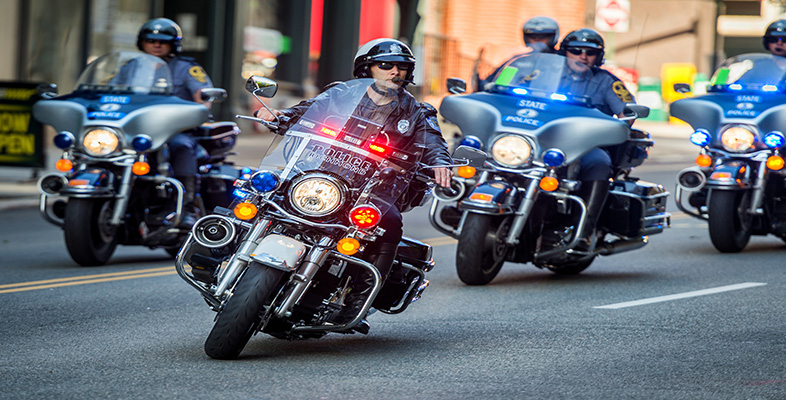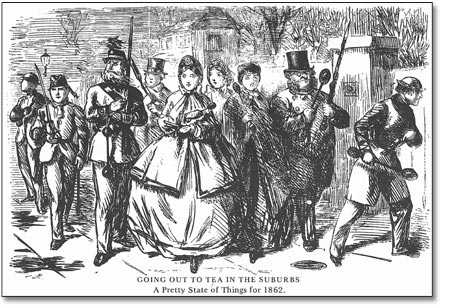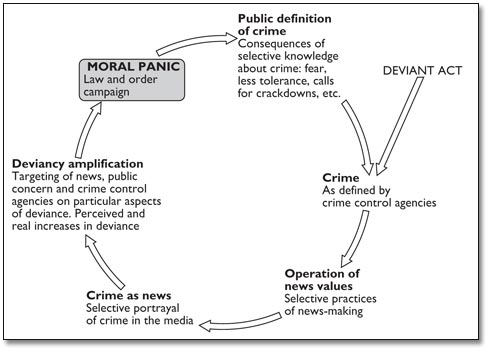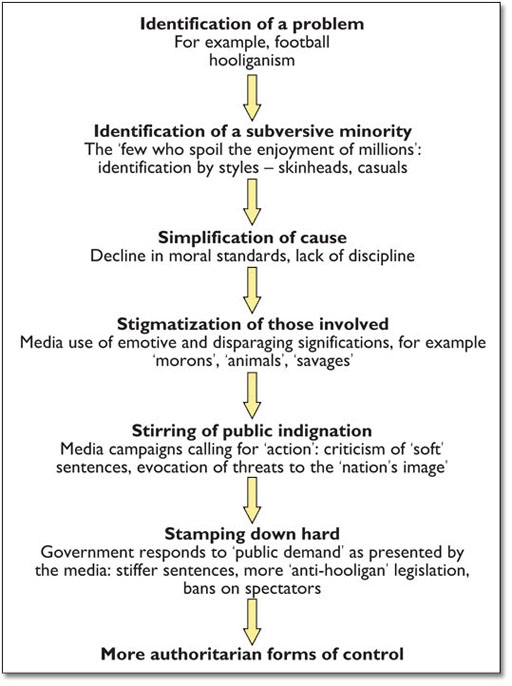3.4 Interpreting the crime problem
The Whole City, My Lord, is alarm'd and uneasy. Wickedness has got such a Head, and the Robbers and Insolence of the Night are such that the citizens are no longer secure within their own Walls or safe even in passing their Streets, but are robbed, insulted, and abused, even at their own Doors … The citizens are oppressed by Rapin and Violence.
(Defoe, 1730, quoted in Reiner, 1996, p.2)
So wrote Daniel Defoe in 1730 in a pamphlet addressed to the Lord Mayor of London entitled An Effectual Scheme for the Immediate Prevention of Street Robberies and Suppressing of all other Disorders of the Night. A bit of a mouthful, but none the less an example that shows the fear of crime and fascination with crime are hardly recent developments. But the similarities go deeper, for Defoe was writing in an era of social and economic change. In the 1730s the population was growing fast, social mobility was on the increase, England's cities were beginning to bulge and the old ruling order began to get nervous about change; change that it could not direct or control.
Defoe's comment is one example of a history of respectable fears. This notion was coined by the social historian and criminologist, Geoffrey Pearson. In his book Hooligan, Pearson claims that the middle-aged of every generation tend to look back nostalgically on the early years of their lives as golden ages of morality, contrasting it with the moral degeneracy of the younger generation (Pearson, 1983). The main theme which runs through many of these accounts is the idea that society has suffered from a demoralisation and fragmentation, that there is in some sense a decline in the solidity of social structures and of shared morality and values. In today's common-sense narratives demoralisation has been driven by rising divorce and underage pregnancy rates, widespread drug-misuse, a general sense of irresponsibility and a lack of respect. Against the waves of crime and unrest the law enforcement agencies of the era, whatever era it is, are increasingly impotent, powerless to defend people and their property from the criminal hordes.
One concept developed by the social sciences to help make sense of such processes is moral panic. This term was explored by Stanley Cohen in the early 1970s:
Societies appear to be subject, every now and then, to periods of moral panic. A condition, episode, person or group of persons emerges to become defined as a threat to societal values and interests; its nature is presented in a stylized and stereotypical fashion by the mass media; the moral barricades are manned by editors, bishops, politicians and other right thinking people; socially accredited experts pronounce their diagnoses and solutions, ways of coping are evolved
(Cohen, 1973, p. 9)
Cohen's study focused on the social reaction to the mods and rockers’ ‘disturbances’ in Clacton on Easter Monday, 1964. Cohen shows how media reaction, to what were in the main small-scale scuffles and vandalism, blew the whole event out of proportion. Newspaper headlines spoke of a ‘Day of Terror’ with Clacton being invaded by a mob ‘hell-bent on destruction’. The media's response served only to whip-up a wider public concern about a breakdown in morality. Cohen described this as a deviancy amplification spiral. The initial outbreak of abnormal behaviour generated an enormous media reaction, in part because it made such a good news story. This in turn forced the police to intervene more strongly in subsequent disturbances, thereby increasing the numbers arrested, and leading to a spiral of increasing police Activity and public concern. Rising numbers of arrests seemed only to justify the initial concerns and the policing strategies adopted. The cycle of events is outlined in Figure 9.
(Source: Taylor et al., 1995, p. 478)
Activity 7
Cohen focuses on mods and rockers. Other researchers have looked at the teddy boy disturbances in the supposedly peaceful and law-abiding 1950s. Can you think of other more recent examples of moral panics which may have a criminal dimension or are considered threats to order perhaps associated with ‘immoral’ and ‘violent’ activities?
If you can, follow the examples you think of through the cycle of moral panics in Figure 9.
Discussion
There are many examples to chose from. We came up with the following: muggers, lager louts, football hooligans, drug-takers, vandalism, AIDS, welfare scroungers, lone parents, ritualised child abuse, paedophiles, industrial agitators and terrorist activities.
You may have some of these, or different ones, but they all serve to illustrate Cohen's main point that media and political reactions to a wide range of public issues have commonly been out of proportion to the actual problem or have invented problems where none existed. The media, in particular television and the press, play an important role in identifying an issue, defining it as a problem and presenting it in a particular way, necessitating particular responses.
Below is one interpretation of the moral panic around football hooliganism.
(Source: Taylor et al., 1995, p. 479)
Moral panics may be socially constructed, but that does not mean they do not have a real impact in the world. On the contrary they do. More likely than not, the moral panic around street crimes such as ‘mugging’ since the 1970s has resulted in discriminatory rates of stop and search and conviction of young black men by the police. In the case of the murder of Stephen Lawrence in 1993, it may have helped lead to the assumption of the criminality of the young black men by the police even when the black youths had been the victims of racist crimes.



